

Summer Camp 1939 - 1944
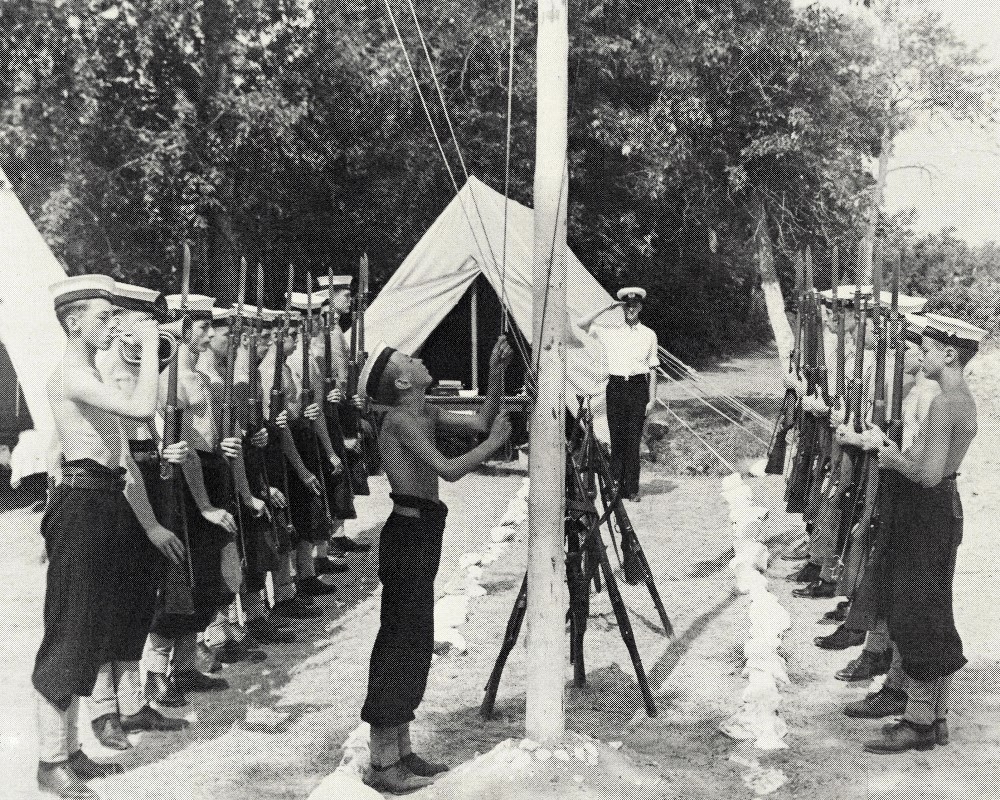 Lt. T.H. Metcalfe Officer of the Day takes salute as guard presents arms during raising of the flag. |
The summer camp held in 1939 through 1942 will be long remembered by the officers and cadets who had the opportunity to participate in them. Though the following resume pertains mainly to the 1939 camp, the training program varied little from year to year.
The camp in 1939 was sponsored by the Navy League of Canada and provided two weeks of excellent training opportunity for the 142 participating cadets and nine of their officers. It was the first camp to be held since 1929.
The campground itself was located 50 yards from the sandy beach that rims Lake Winnipeg at Stevenson's Point. There were sixteen bell tents formed up in two lines and each manned by six cadets, a leading seaman and five ordinary cadets. Besides these, there were officers tents, two large marquee tents, which were used by the band, cook tents and mess tents. Medical facilities were provided in another tent that was continuously manned by a St. John Ambulance corpsman. In addition, a doctor visited the camp daily.
When the cadets first came aboard, they came in their blues, white-topped caps and leggings. A dunnage camp with lighter camp clothes, their own mess gear and toilet articles was also included. Immediately upon arrival, they were issued with straw hats, three regulation army blankets and a ground sheet. The straw hats, though not exactly Navy issue, were the only practical headwear suitable for the shores of Lake Winnipeg in July.
The camp routine started at 6:00 a.m. with reveille and a sick parade. The next call was for "mugs -up" and the cadets usually doubled to the cookhouse where they were given a steaming mug of cocoa to start the day. Cocoa gone, the boys trooped back to the camp for bathing parade. Each with a bar of soap, they paraded to the lake and into it. Morning swim was merged with morning bath to the satisfaction of the officers and cadets.
Breakfast call came at 7:30 and was immediately followed by kit inspection. Blankets and ground sheets were folded and Iaid in front of each tent. Duffle bags were placed on top with eating gear scrubbed clean with sand, on top of the bags. This being completed, the six cadets stood in front of their tents, their elbows close to their sides, hands out in front of them. Their hands and fingernails were inspected for cleanliness as well as the duffle and gear.
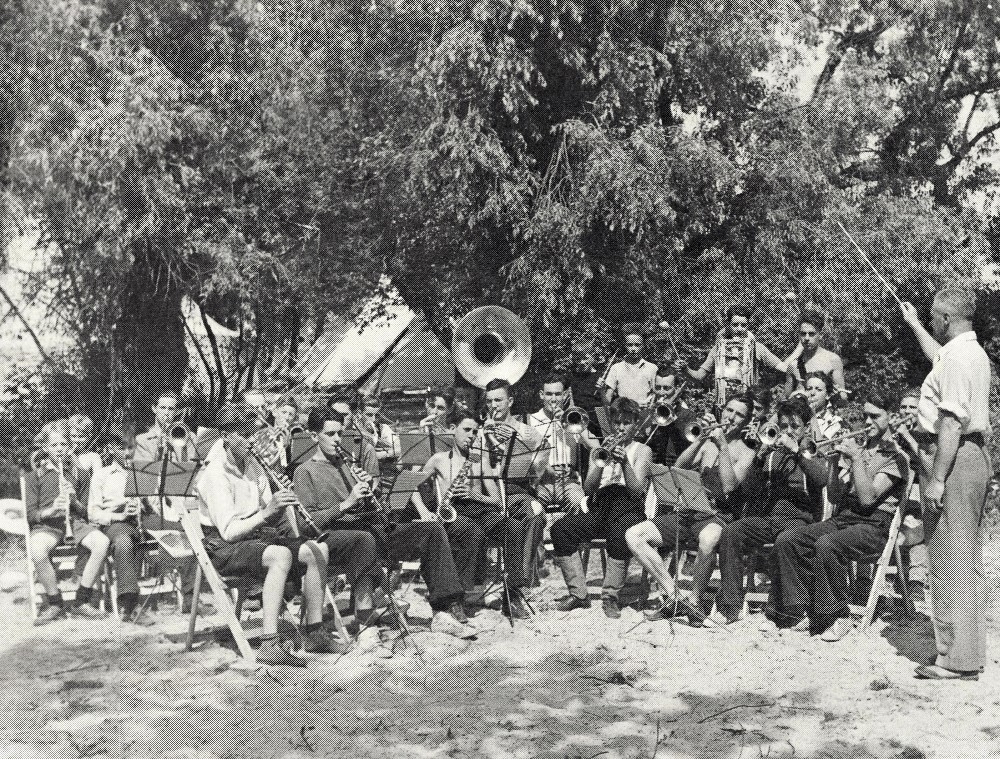 Band practice under command of Lt. W.A. Cramp. |
After inspection the corps was split into units for training while the band, under bandmaster Lt. W.A. Cramp, practiced in one of the big marquee tents. The remainder of the unit participated in seamanship, first aid, signalling and rope work classes. If it was their turn, the cadets were also expected to perform fatigue duty.
As is part of Naval life, a guard was posted as well as a duty watch. Every day an officer was on duty for twenty-four hours. He was relieved at 9:00 a.m. each morning when a guard was mounted. The normal duty watch consisted of one petty officer and twelve seamen who were under the direct supervision of the officer of the day.
Each watch was on duty one hour and off duty for two. Sentries were posted at the boundaries of the camp while others stayed in the vicinity of the headquarters to assist in the various administrative duties. The log book had to be maintained, messages carried about the camp and liberty parties processed in and out of camp.
By 11:00 a.m. the greater part of the routine work was completed. Classes were dismissed and recreational activities were gotten underway. Usually the cadets spent a great deal of time in the water however, a certain amount of organized sports was always underway. With lunch completed and depending upon the weather, route marches were held. The corps, with the band leading, marched down nearby roads and through Winnipeg Beach.
For those eligible, there was time off from the camp to visit the local resort facilities provided by the town of Winnipeg Beach. Afternoon liberty parties, in blues, were inspected prior to leaving camp at 2:00 p.m. Their passes expired by 5:00 p.m. and they were expected to have returned by that time or suffer the consequential defaulters punishments. In the evenings liberty parties were allowed from 7:00 p.m. to 9:45 p.m. returning to camp in time for lights out at 10:00 p.m.
The 1939 camp was under the command of Lt. Cdr. Baird and his second in command Lt. J. McCoubrey. Other officers included on the staff were Warrant Officer A.E. Symes, Warrant Officer W.J. Hodge, Sub. Lt. H. Eggerton, Lt. W.A. Cramp, Sub. Lt. H. Metcalfe, Warrant Officer G.M. Soppet, and Warrant Officer V. Mayle.
There was no overdose of discipline or routine at the camp. What discipline there was, was shifted so that its responsibility fell on the shoulders of the cadets. This proved sufficient to ensure an orderly shipshape camp without putting a stop to any fun.
The photographs included in these pages were provided by Mr. T.W. Baird of Grand Marais, Manitoba, and Mr. H. Metcalfe of Winnipeg, Manitoba.
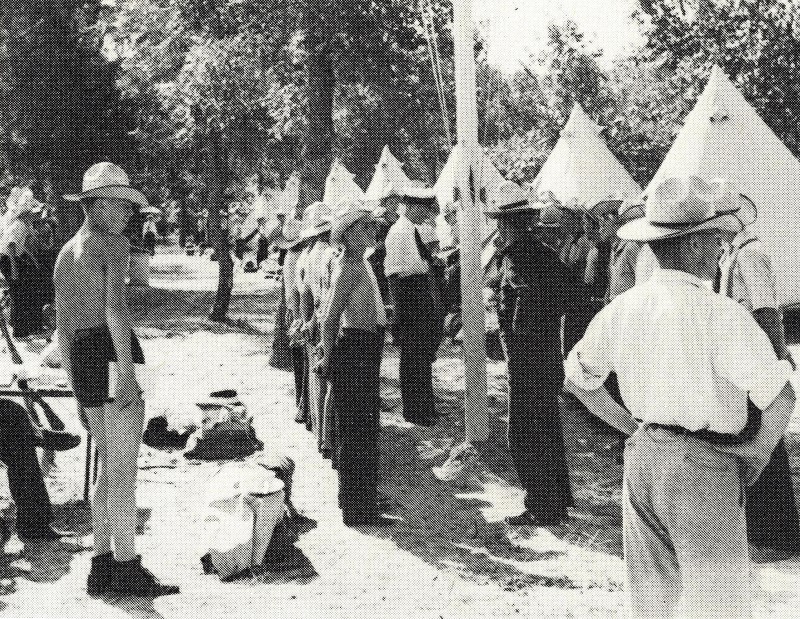 Cadets form up in preparation for morning inspection. |
 Purchasing candy and soft drinks at camp canteen. |
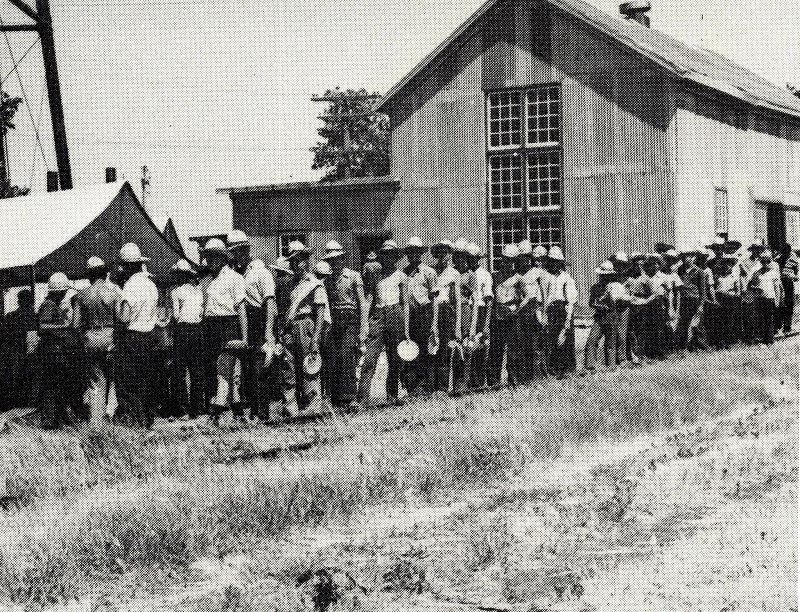 Meal Time: chow line up outside kitchen tent. |
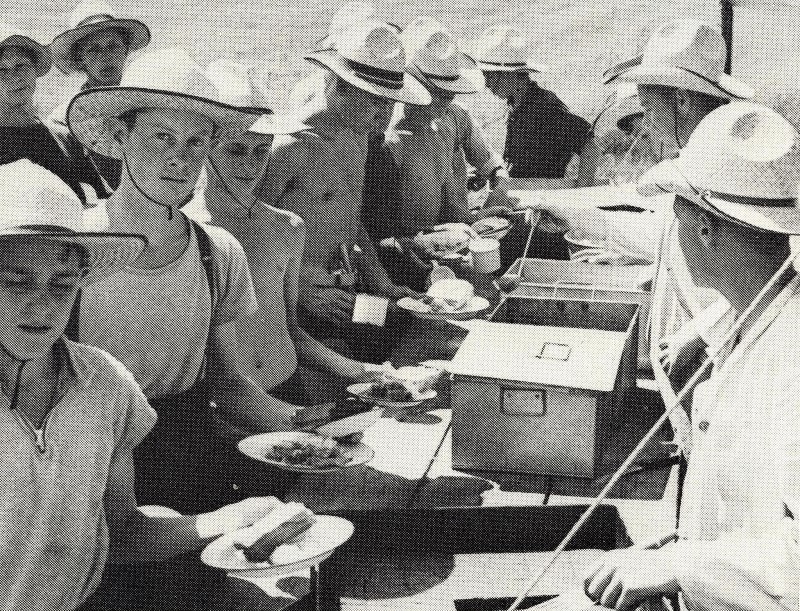 Meal Time: chow line up outside kitchen tent. |
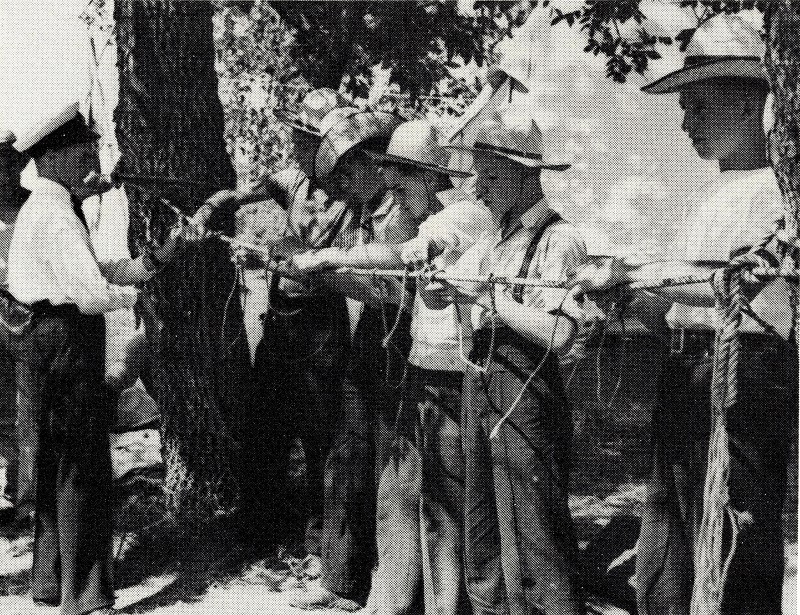 Ropework class under instruction of Sub.Lt. G.M. Soppet. |
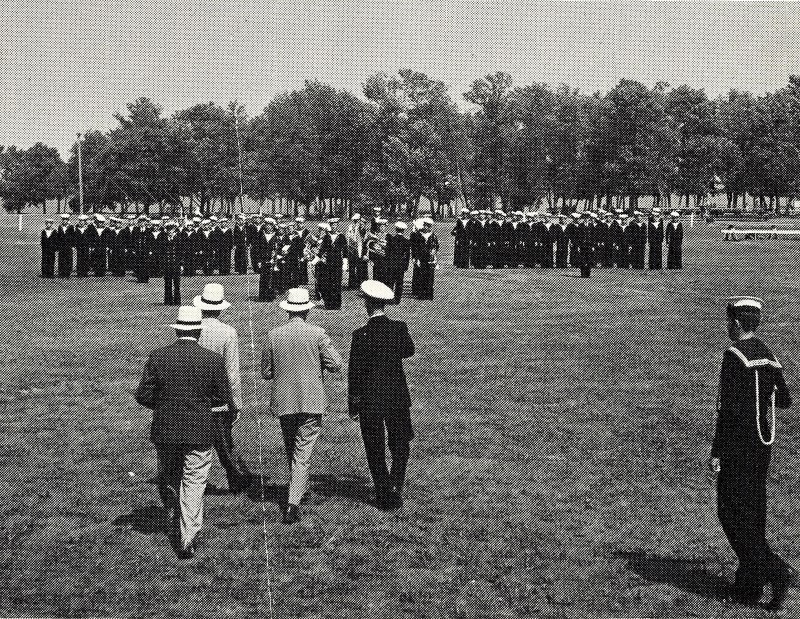 LCdr. T.W. Baird; J.R.K. Millen; J.D. Ruttan, President Manitoba Branch- Navy League of Canada; and an unidentified gentleman approach cadets formed up for inspection. |
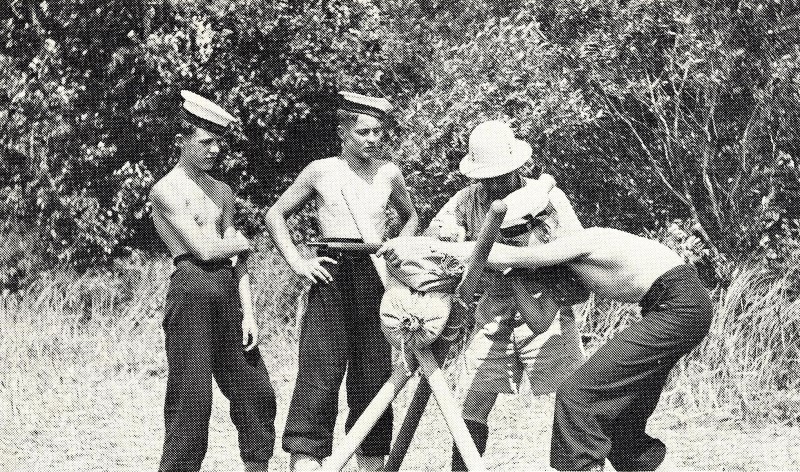 Cadets receiving firearm and range instruction. |
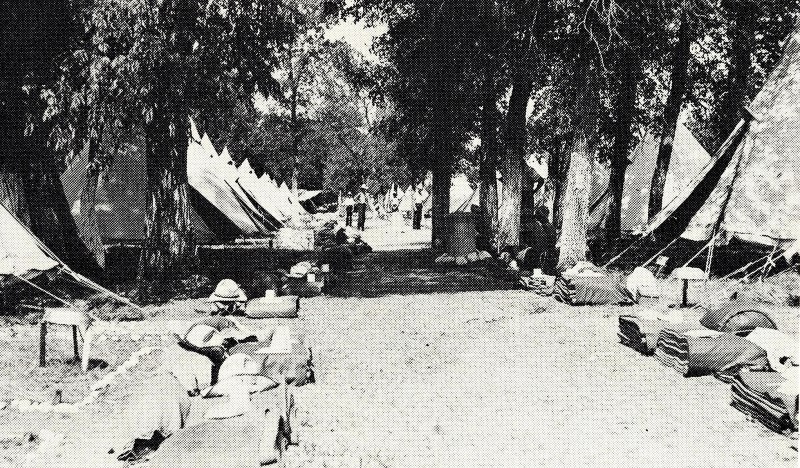 Camp site ready for morning inspection. |
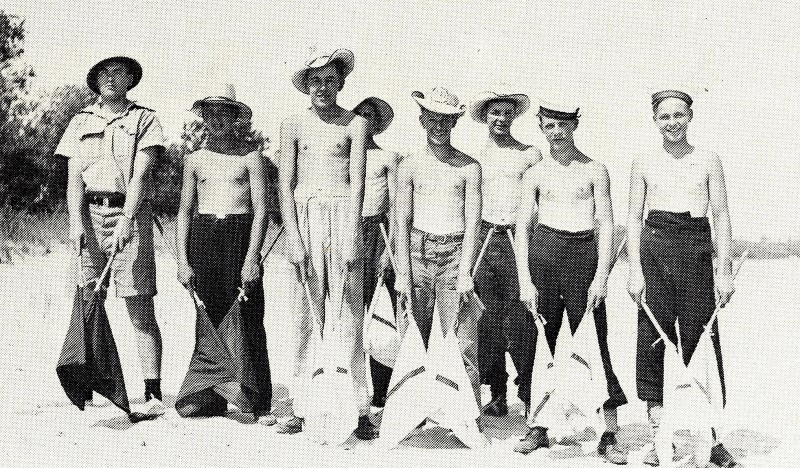 Semaphore instruction on beach. |
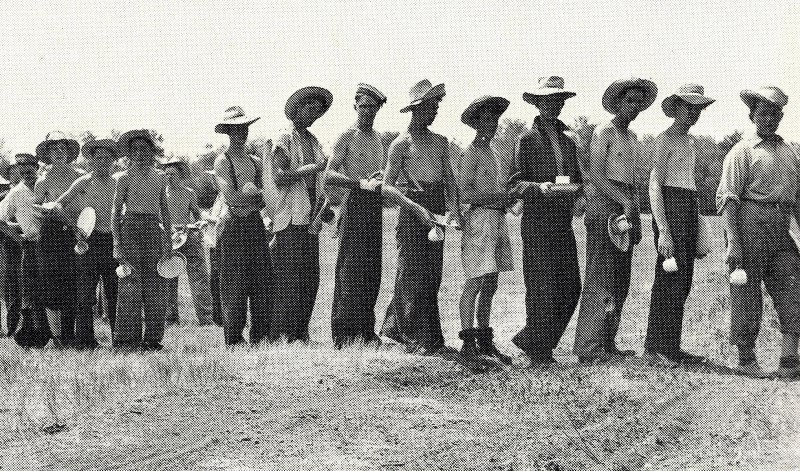 Chow line. |
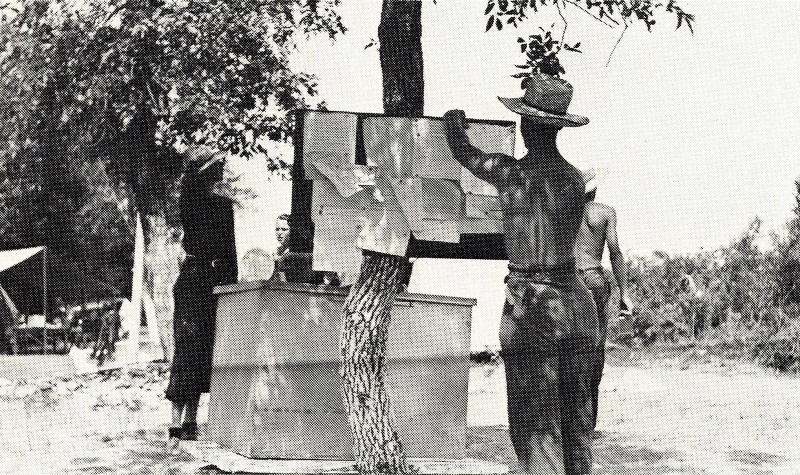 Posting of Daily Orders on camp bulletin board. |
 Rifle drill class on beach. |
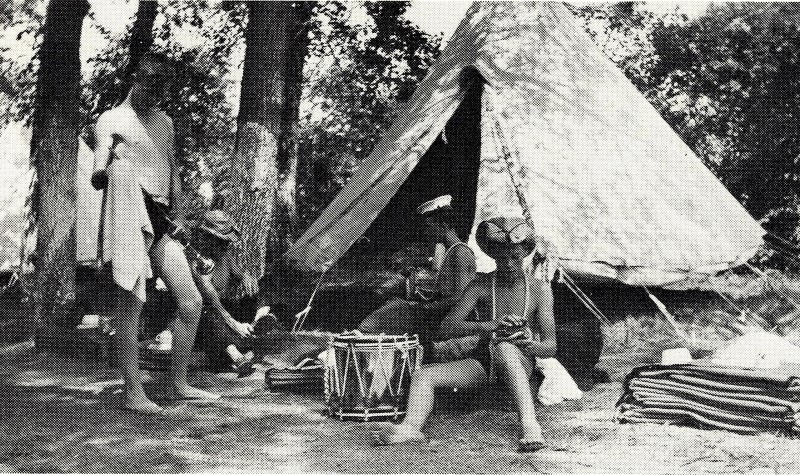 Band members cleaning gear and polishing instruments prior to inspection. |
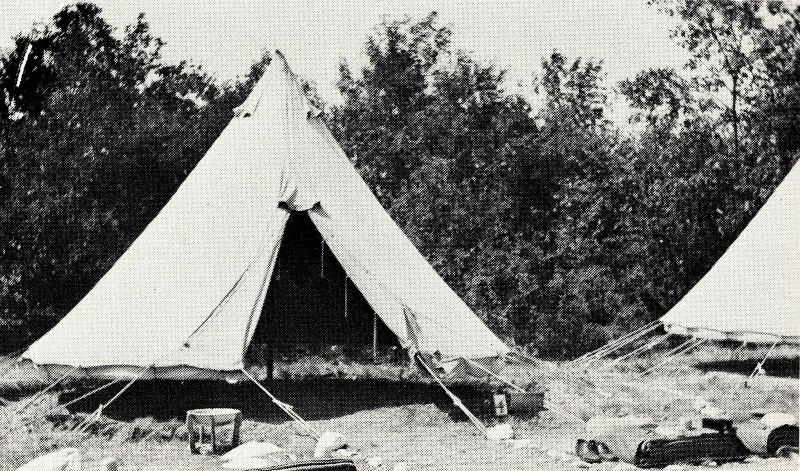 Tent and gear ready for inspection. |
Pages 43-46